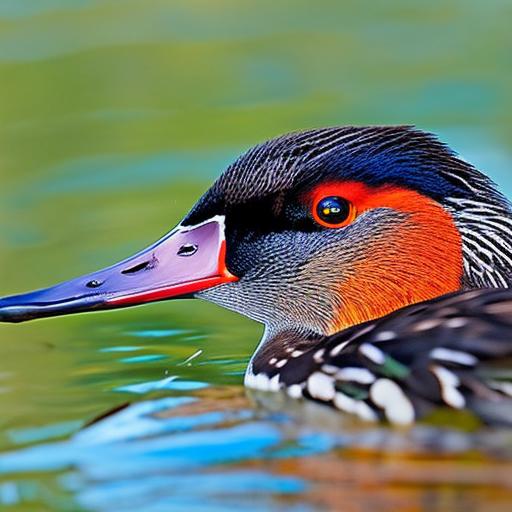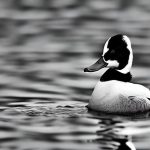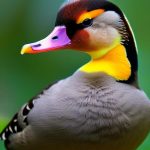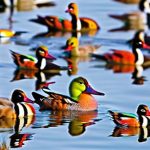Ducks are a popular choice for farmers and homesteaders in Florida due to their versatility and adaptability to the state’s climate. With a wide variety of duck breeds to choose from, it is important to select the right breed that suits your specific needs and goals. Whether you are looking for a breed that excels in egg production, meat production, or simply for ornamental purposes, there is a duck breed that will fit your requirements.
Key Takeaways
- There are many different duck breeds found in Florida, each with their own unique characteristics and purposes.
- Some of the most popular duck breeds in Florida include the Pekin, Muscovy, and Khaki Campbell.
- The history and origin of duck breeds in Florida can be traced back to early settlers and their need for waterfowl for food and feathers.
- Different duck breeds in Florida have varying physical characteristics, such as size, color, and feather patterns.
- The best duck breeds for egg production in Florida include the Khaki Campbell and Indian Runner, while the Pekin and Muscovy are popular choices for meat production.
The Most Popular Duck Breeds Found in Florida
1. Mallard: The Mallard is one of the most common duck breeds found in Florida. Known for their beautiful plumage and vibrant colors, Mallards are often kept for their ornamental value. They are also excellent flyers and can be used for hunting purposes.
2. Muscovy: Muscovy ducks are another popular breed found in Florida. They are known for their large size and unique appearance, with males having red wattles and caruncles on their face. Muscovy ducks are often kept for meat production as they have a lean and flavorful meat.
3. Pekin: Pekin ducks are widely raised for meat production in Florida. They have a white plumage and a large body size, making them ideal for meat production. Pekin ducks also have a calm temperament, making them easy to handle and manage.
4. Rouen: Rouen ducks are similar in appearance to Mallards but have a larger size. They are often kept for their ornamental value due to their beautiful plumage. Rouen ducks also have good meat qualities, making them suitable for both meat production and ornamental purposes.
5. Khaki Campbell: Khaki Campbell ducks are known for their excellent egg-laying abilities. They are highly productive and can lay up to 300 eggs per year. Khaki Campbell ducks have a khaki-colored plumage and a slender body shape.
The History and Origin of Duck Breeds in Florida
Ducks were introduced to Florida by European settlers in the 16th century. They brought with them various breeds of ducks, including Mallards and Muscovy ducks. These ducks quickly adapted to the warm and humid climate of Florida and thrived in the state’s wetlands and waterways.
Duck farming has played a significant role in Florida’s economy throughout history. The state’s abundant water resources and favorable climate make it an ideal location for duck farming. Duck meat and eggs are highly sought after, both locally and internationally, contributing to the state’s agricultural industry.
The Physical Characteristics of Different Duck Breeds in Florida
1. Size: Duck breeds in Florida vary in size, with some breeds being larger than others. Pekin ducks, for example, are known for their large size, while Khaki Campbell ducks are smaller and more slender.
2. Feather color and pattern: Duck breeds in Florida come in a variety of feather colors and patterns. Mallards have vibrant green heads, while Muscovy ducks have a unique black and white feather pattern. Rouen ducks have a similar appearance to Mallards but with a larger size.
3. Bill shape and color: The bill shape and color of duck breeds can also vary. Muscovy ducks have a fleshy red bill with black markings, while Pekin ducks have a bright orange bill.
The Best Duck Breeds for Egg Production in Florida
1. Khaki Campbell: Khaki Campbell ducks are highly regarded for their excellent egg-laying abilities. They are known to lay up to 300 eggs per year, making them one of the most productive duck breeds for egg production.
2. Indian Runner: Indian Runner ducks are another breed that excels in egg production. They have a unique upright stance and can lay up to 200 eggs per year.
3. Welsh Harlequin: Welsh Harlequin ducks are known for their good egg-laying abilities and calm temperament. They can lay up to 250 eggs per year and are easy to handle and manage.
The Best Duck Breeds for Meat Production in Florida
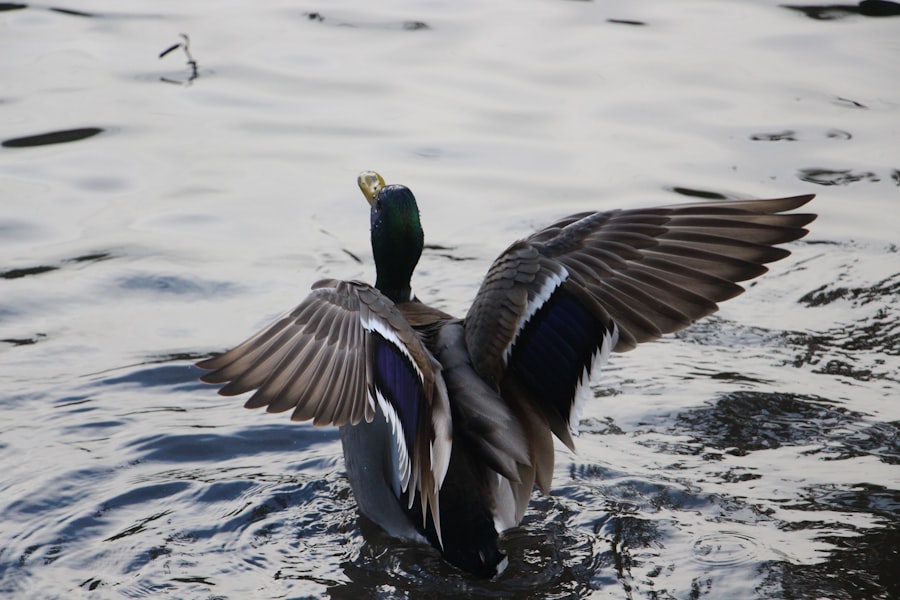
1. Pekin: Pekin ducks are widely recognized for their meat qualities. They have a large body size and a lean and flavorful meat, making them ideal for meat production.
2. Muscovy: Muscovy ducks are also popular for meat production in Florida. They have a lean and tender meat that is highly sought after.
3. Rouen: Rouen ducks have good meat qualities and are often raised for both meat production and ornamental purposes. They have a larger size compared to other duck breeds, making them suitable for meat production.
The Best Duck Breeds for Ornamental Purposes in Florida
1. Call: Call ducks are small in size and have a unique appearance, making them popular for ornamental purposes. They come in a variety of colors and patterns, adding beauty to any farm or homestead.
2. Crested: Crested ducks are known for the tuft of feathers on their head, giving them a distinctive appearance. They are often kept for their ornamental value and come in various colors.
3. Mandarin: Mandarin ducks are highly prized for their vibrant plumage, with males having striking colors and patterns. They are often kept for their ornamental value and can add beauty to any pond or water feature.
The Challenges of Raising Duck Breeds in Florida
1. Heat and humidity: The hot and humid climate of Florida can pose challenges for raising duck breeds. Ducks are susceptible to heat stress, so it is important to provide them with shade, access to water, and proper ventilation to keep them cool.
2. Predators: Florida is home to various predators that can pose a threat to duck breeds, including raccoons, snakes, and birds of prey. It is important to implement proper predator control measures to protect the ducks.
3. Water management: Ducks require access to water for bathing and swimming. Proper water management is essential to prevent water stagnation and the spread of diseases. Regular cleaning and maintenance of water sources are necessary to ensure the health and well-being of the ducks.
The Importance of Proper Care and Management of Duck Breeds in Florida
1. Feeding and nutrition: Ducks require a balanced diet to maintain their health and productivity. A diet consisting of grains, vegetables, and protein sources is essential for their growth and development. It is important to provide them with fresh and clean water at all times.
2. Housing and shelter: Ducks require appropriate housing and shelter to protect them from the elements and predators. A well-ventilated and secure shelter is necessary to keep them safe and comfortable.
3. Health and disease prevention: Regular health checks, vaccinations, and proper hygiene practices are essential for maintaining the health of duck breeds. It is important to monitor their behavior and appearance for any signs of illness or disease.
Choosing the Right Duck Breed for Your Florida Farm or Homestead
In conclusion, choosing the right duck breed for your Florida farm or homestead is crucial for achieving your goals and meeting your specific needs. Whether you are looking for a breed that excels in egg production, meat production, or simply for ornamental purposes, there is a duck breed that will suit your requirements. Consider factors such as size, feather color and pattern, bill shape and color, as well as the challenges and requirements of raising ducks in Florida. By selecting the right breed and providing proper care and management, you can enjoy the benefits of raising ducks on your farm or homestead in Florida.
If you’re interested in learning more about duck breeds in Florida, you may also want to check out this informative article on poultrywizard.com. It discusses the different types of ducks that thrive in the Florida climate and provides valuable insights on their characteristics and care requirements. To further enhance your knowledge on poultry keeping, you can also explore other interesting articles such as “Chicken Coop Interior Ideas” for creative coop design inspiration, “Can Guinea Fowl Live with Chickens” to understand the dynamics of keeping multiple poultry species together, and “The Chicken Coop Country Diner” for tips on providing a balanced diet for your feathered friends.
FAQs
What are the most common duck breeds in Florida?
The most common duck breeds in Florida are the Muscovy duck, the Mallard duck, and the Pekin duck.
Are Muscovy ducks native to Florida?
No, Muscovy ducks are not native to Florida. They were introduced to the state in the 1960s and have since become a common sight in many areas.
What is the difference between a male and female Muscovy duck?
Male Muscovy ducks are larger than females and have more prominent caruncles (fleshy growths) on their faces. Males also have a more iridescent plumage than females.
Can you keep ducks as pets in Florida?
Yes, ducks can be kept as pets in Florida. However, it is important to check with local regulations and zoning laws before keeping ducks on your property.
What is the lifespan of a duck?
The lifespan of a duck varies depending on the breed and living conditions. On average, domestic ducks can live up to 10 years, while wild ducks typically have a shorter lifespan.
What do ducks eat?
Ducks are omnivores and eat a variety of foods, including insects, plants, seeds, and small animals. Domestic ducks can also be fed commercial duck feed.
Do ducks migrate in Florida?
Some duck species do migrate through Florida during the winter months, while others are year-round residents. The migration patterns of ducks in Florida vary depending on the species.
Meet Walter, the feathered-friend fanatic of Florida! Nestled in the sunshine state, Walter struts through life with his feathered companions, clucking his way to happiness. With a coop that’s fancier than a five-star hotel, he’s the Don Juan of the chicken world. When he’s not teaching his hens to do the cha-cha, you’ll find him in a heated debate with his prized rooster, Sir Clucks-a-Lot. Walter’s poultry passion is no yolk; he’s the sunny-side-up guy you never knew you needed in your flock of friends!

